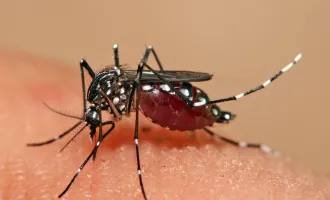
Standing With the Frisco Five
Early on the morning of Saturday, April 30, Clínica Martín Baró opened its doors in the Mission, as it does every Saturday. But it was no ordinary day at la Clínica.
A pair of yellow cabs pulled up outside, and in walked five nondescript men and women, looking weary but resolute. They were the “Frisco Five,” a group of San Francisco citizens who were — at that point — 10 days into a hunger strike protesting police brutality in the city.
The group received a warm greeting from the UCSF first-year medical students and SF State student volunteers who were staffing the clinic that morning, and from Dr. Rupa Marya, the UCSF Assistant Professor of Medicine and activist who arranged the visit.
Additional student volunteers and the morning’s preceptor, Dr. Marcia Glass, were present to ensure that the clinic would still serve its usual patients, the economically underserved, primarily Spanish-speaking residents of the Mission District.
But with the arrival of the Frisco Five, Clínica Martín Baró was also to be a home base for a very different mission: hunger strike healthcare.
What happens to a person’s health when he or she stops eating?
After 24 to 48 hours, the body runs out of its glycogen, a carbohydrate reserve stored in the liver. The body’s gears then shift to use stored fat and the body’s protein.
Most tissues can use fatty acids released from adipocytes (fat cells) for fuel. Unfortunately, the brain cannot. To provide the brain with the sugar it craves, the liver takes in amino acids and builds glucose from scratch — a process called gluconeogenesis.
At the same time, adipocytes break their stored fat into smaller compounds called ketone bodies that your brain slowly begins using in addition to glucose being made in the liver.
Through these efforts, the body can survive many weeks of starvation, an amazing feat. Nevertheless, the process takes its toll.
Because gluconeogenesis requires a steady stream of amino acids, the body must slowly digest its own muscles and other tissues. Muscles and fat stores are a finite resource, and eventually one or both will run out.
Extended periods of hunger can lead to severe electrolyte imbalances and arrhythmias, which are among the most common causes of death in starvation.
The impact of starvation goes beyond metabolism. The landmark Minnesota Starvation Experiment, which observed a group of conscientious objectors to World War II undertaking a hunger strike, found a greatly increased risk of adverse psychological outcomes like decreased mental concentration and depression.
Given the health risks associated with extended periods of starvation, the healthcare partnership being built that Saturday morning between Frisco Five and Clínica Martín-Baró was of clear importance.
As the day wore on, Dr. Marya and UCSF medical students saw each of the five hunger strikers, taking their vitals, performing physical exams, and drawing blood to check electrolyte levels. Though clearly exhausted, each of the brave activists was grateful to be receiving care.
The morning’s work went beyond labs and blood pressures.
An important shared goal was to document each of the hunger striker’s wishes for the care they would like to receive (if any) in the event that further starvation left them incapacitated.
City officials had said that they would intervene medically if any of the hunger strikers became unconscious. However if the strikers had directives on file declining such care, then if the city tried to force nutrition therapy on them at any point, it would constitute assault on their bodies.
The morning at la Clínica was part of a much larger effort over the second week of the hunger strike in which UCSF medical students, doctors, and SF State volunteers routinely visited the Frisco Five at the site of the strike to monitor their health.
In addition to providing medical support, UCSF students stood alongside the Frisco Five as activists.
When the hunger strikers marched to City Hall later that week — pushed in wheelchairs due to their weakened state — Dr. Marya and a group of UCSF students in their white coats were front-and-center in the group marching with them.
The White Coats for Black Lives movement at UCSF and the PRIME-US program helped lead and facilitate UCSF student involvement, but students from outside the two groups participated as well.
“I believe that police violence is inextricably tied to the displacement and gentrification we have been seeing in San Francisco,” said Yakira Teitel, a fourth-year UCSF medical student who participated.
“I see it as my duty as a San Franciscan to fight to keep our city diverse, affordable, welcoming and safe for all different kinds of people and families.”
All the while, the Frisco Five, student volunteers, Dr. Marya, and other members of the San Francisco physician community continued to spread the word about police violence as a critical public health issue.
As the strike neared the end of its second week, headlines around the world picked up the story and called attention to the Frisco Five’s goal: the firing of SFPD Chief Greg Suhr.
Then, the five hunger strikers’ health took a turn for the worse.
On day 17, at the request of the community, the group called off the strike and received urgent medical attention at UCSF.
However, the five activists and their supporters remain committed to the cause of pursuing justice for police brutality in the city.
Starting on Monday, May 9, the movement began a 17-day campaign of continuous action, which UCSF students have taken part in.
More information can be found at the Frisco Five’s Facebook page or on Twitter.
Additionally, a coalition of UCSF students, residents, and healthcare providers who are committed to combatting the public health issue of police brutality is forming on campus, and welcomes participants and supporters.
“I came to medical school to gain skills to work with communities, and this movement has been all about community building” said Teitel.
“It has been an honor to play a small role in supporting that, and inspiring to see the community strengthen and heal together.”


